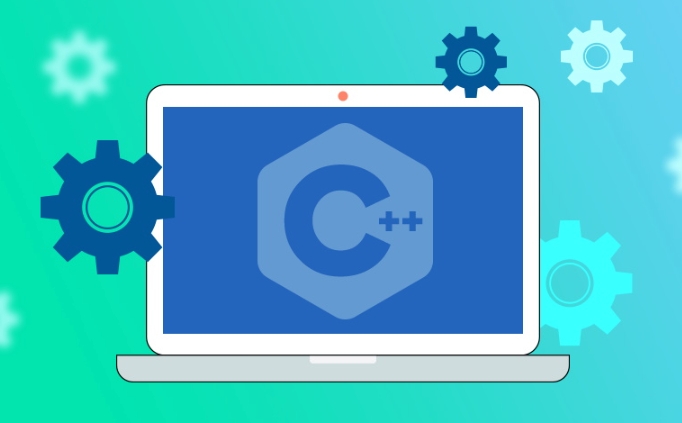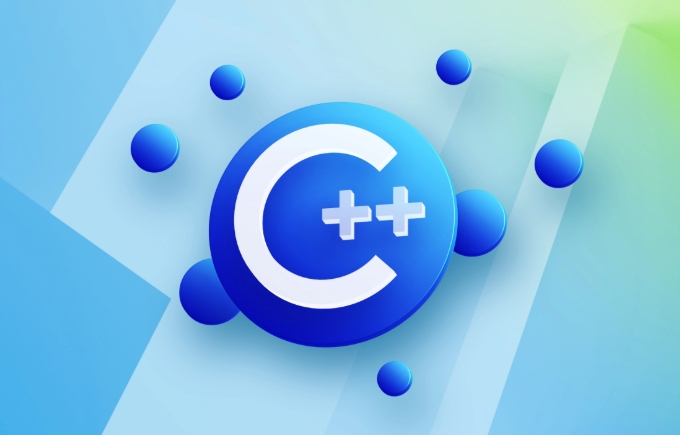In C, the POD (Plain Old Data) type refers to a type with a simple structure and compatible with C language data processing. It needs to meet two conditions: it has ordinary copy semantics, which can be copied by memcpy; it has a standard layout and the memory structure is predictable. Specific requirements include: all non-static members are public, no user-defined constructors or destructors, no virtual functions or base classes, and all non-static members themselves are PODs. For example, struct Point{int x; int y;} is POD. Its uses include binary I/O, C interoperability, performance optimization, etc. You can check whether the type is POD through std::is_pod, but it is recommended to use std::is_trivial and std::is_standard_layout after C 11. When using it, be careful to avoid private members, inheritance, virtual functions and certain constructors to avoid damaging POD characteristics.

In C , a POD (Plain Old Data) type refers to a type that's both simple in its structure and compatible with C-style data handling. These types can be safely copied with memcpy , initialized with {0} notation, and generally behave predictably in low-level operations.

POD types are especially useful when you need interoperability with C libraries or when performance and memory layout matter—like in systems programming, embedded systems, or when working with serialization libraries.

What Makes a Type a POD?
A type is considered a POD in C if it satisfy two main conditions:
- Trivial Copy Semantics : The type can be copied using memory copy functions like
memcpywithout side effects. - Standard Layout : The memory layout of the type follows standard traditions so that it can be accessed predictably across different systems or languages.
Here's what qualifies as a POD:

- All non-static data members are public.
- It has no user-defined constructors or destructors.
- It doesn't have virtual functions or base classes.
- All non-static data members are themselves PODs.
For example:
struct Point {
int x;
int y;
}; This Point struct is a POD because it meets all the above criteria.
Why Are POD Types Still Relevant?
Even though modern C introduces more complex abstractions, POD types remain valuable for specific use cases:
- Binary I/O and Serialization : Since they have a predictable layout, they can be directly written to or read from binary files or network streams.
- C Interoperability : You can pass them to C functions without worrying about name mangling or incompatible layouts.
- Performance Optimization : They're easier for compilers to optimize and are often used in performance-critical code.
If you're building something like a game engine or a device driver, you'll likely encounter situations where sticking with POD types make your life easier.
How to Check If a Type Is POD
You don't always have to guess whether a type qualifies as a POD. C provides a built-in trait for checking this:
#include <type_traits> static_assert(std::is_pod<Point>::value, "Point should be a POD");
However, starting with C 11, the term “POD” became less central. Instead, the language introduced finer-grained traits like std::is_trivial and std::is_standard_layout . So while std::is_pod still exists, you can also test those two properties separately if you want more control.
Practical Use Cases and Common Pitfalls
Some real-world examples where PODs shine include:
- Sending structs over a network without extra serialization logic.
- Memory-mapped hardware registers in embedded systems.
- Sharing data between threads without synchronization overhead.
But beware: once you add things like private members, inheritance, or virtual functions, your type is no longer a POD. That can silently break assumptions in legacy or system-level code expecting POD behavior.
Also, even adding a default constructor like this:
struct Point {
int x;
int y;
Point() = default; // Not allowed for PODs before C 14
};can disqualify your type depending on the C version you're targeting.
So if you're designing a struct and want it to stay compatible with C or memory-sensitive environments, keep it simple. Stick to public fields, no virtual anything, and avoid custom constructors unless you're sure they won't affect the type's triviality.
Basically that's it.
The above is the detailed content of What is a POD (Plain Old Data) type in C ?. For more information, please follow other related articles on the PHP Chinese website!

Hot AI Tools

Undress AI Tool
Undress images for free

Undresser.AI Undress
AI-powered app for creating realistic nude photos

AI Clothes Remover
Online AI tool for removing clothes from photos.

Clothoff.io
AI clothes remover

Video Face Swap
Swap faces in any video effortlessly with our completely free AI face swap tool!

Hot Article

Hot Tools

Notepad++7.3.1
Easy-to-use and free code editor

SublimeText3 Chinese version
Chinese version, very easy to use

Zend Studio 13.0.1
Powerful PHP integrated development environment

Dreamweaver CS6
Visual web development tools

SublimeText3 Mac version
God-level code editing software (SublimeText3)

Hot Topics
 How to implement the logging system in C?
May 23, 2025 pm 09:18 PM
How to implement the logging system in C?
May 23, 2025 pm 09:18 PM
Implementing an efficient and flexible logging system in C can use the following steps: 1. Define log classes and process log information at different levels; 2. Use policy mode to achieve multi-objective output; 3. Ensure thread safety through mutex locks; 4. Use lock-free queues for performance optimization. This can build a log system that meets the needs of actual application.
 C : Is Polymorphism really useful?
Jun 20, 2025 am 12:01 AM
C : Is Polymorphism really useful?
Jun 20, 2025 am 12:01 AM
Yes, polymorphisms in C are very useful. 1) It provides flexibility to allow easy addition of new types; 2) promotes code reuse and reduces duplication; 3) simplifies maintenance, making the code easier to expand and adapt to changes. Despite performance and memory management challenges, its advantages are particularly significant in complex systems.
 How to implement function overloading in C?
May 23, 2025 pm 09:15 PM
How to implement function overloading in C?
May 23, 2025 pm 09:15 PM
Function overloading is implemented in C through different parameter lists. 1. Use different parameter lists to distinguish function versions, such as calculatedArea(radius), calculatedArea(length,width), calculatedArea(base,height,side1,side2). 2. Avoid naming conflicts and excessive overloading, and pay attention to the use of default parameters. 3. Functions cannot be overloaded based on the return value type. 4. Optimization suggestions include simplifying the parameter list, using const references and template functions.
 C tutorial for people who know Python
Jul 01, 2025 am 01:11 AM
C tutorial for people who know Python
Jul 01, 2025 am 01:11 AM
People who study Python transfer to C The most direct confusion is: Why can't you write like Python? Because C, although the syntax is more complex, provides underlying control capabilities and performance advantages. 1. In terms of syntax structure, C uses curly braces {} instead of indentation to organize code blocks, and variable types must be explicitly declared; 2. In terms of type system and memory management, C does not have an automatic garbage collection mechanism, and needs to manually manage memory and pay attention to releasing resources. RAII technology can assist resource management; 3. In functions and class definitions, C needs to explicitly access modifiers, constructors and destructors, and supports advanced functions such as operator overloading; 4. In terms of standard libraries, STL provides powerful containers and algorithms, but needs to adapt to generic programming ideas; 5
 What does if in c mean? Analysis of keywords in c
May 23, 2025 pm 09:12 PM
What does if in c mean? Analysis of keywords in c
May 23, 2025 pm 09:12 PM
In C, if is a keyword used for conditional judgment, allowing the program to execute different code blocks according to specific conditions. 1) Basic usage: if(number>0) execute the corresponding code block. 2) if-else structure: handles two situations, such as number>0 or number0, number
 C Destructors: Practical Code Examples
Jun 22, 2025 am 12:16 AM
C Destructors: Practical Code Examples
Jun 22, 2025 am 12:16 AM
C destructorsarespecialmemberfunctionsthatautomaticallyreleaseresourceswhenanobjectgoesoutofscopeorisdeleted.1)Theyarecrucialformanagingmemory,filehandles,andnetworkconnections.2)Beginnersoftenneglectdefiningdestructorsfordynamicmemory,leadingtomemo
 What is the Standard Template Library (STL) in C ?
Jul 01, 2025 am 01:17 AM
What is the Standard Template Library (STL) in C ?
Jul 01, 2025 am 01:17 AM
C STL is a set of general template classes and functions, including core components such as containers, algorithms, and iterators. Containers such as vector, list, map, and set are used to store data. Vector supports random access, which is suitable for frequent reading; list insertion and deletion are efficient but accessed slowly; map and set are based on red and black trees, and automatic sorting is suitable for fast searches. Algorithms such as sort, find, copy, transform, and accumulate are commonly used to encapsulate them, and they act on the iterator range of the container. The iterator acts as a bridge connecting containers to algorithms, supporting traversal and accessing elements. Other components include function objects, adapters, allocators, which are used to customize logic, change behavior, and memory management. STL simplifies C
 How to use cin and cout for input/output in C ?
Jul 02, 2025 am 01:10 AM
How to use cin and cout for input/output in C ?
Jul 02, 2025 am 01:10 AM
In C, cin and cout are used for console input and output. 1. Use cout to read the input, pay attention to type matching problems, and stop encountering spaces; 3. Use getline(cin, str) when reading strings containing spaces; 4. When using cin and getline, you need to clean the remaining characters in the buffer; 5. When entering incorrectly, you need to call cin.clear() and cin.ignore() to deal with exception status. Master these key points and write stable console programs.






